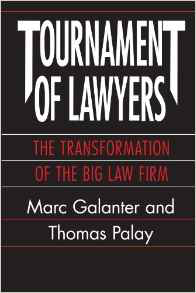Today’s young lawyers are opting out of the Hunger Games
Compared to 1991 it seems today’s young lawyers are opting out of the Hunger Games. In that year Marc Galanter and Thomas Palay wrote Tournament of Lawyers positing that the success of the BigLaw business model depended in part on an incentivised ‘tournament’ for promotion. No more it seems.
By keeping the number of partners low — while rewarding those anointed few with remuneration considerably more vast than their junior colleagues — young lawyers are compelled to out-compete one another in efficiency and effectiveness.
But increasingly it looks as if today’s young lawyers are opting out of the tournament.
Although firms are predictably cagey when it comes to discussing talent issues, anecdotally at least, one top tier Australian firm currently has a 100% attrition rate over a five-year period. Not one lawyer remains from the graduate intake conducted five years ago. Stories from other top tier firms are just as dire, with some young talent leaving before they can even add ‘solicitor’ to their business cards.
It’s not difficult to see why. The track to partner, and other senior positions, seems to stretch out ever further into the horizon. Some firms have sought to combat this early-onset career fatigue by introducing more rungs to the lower end of the ladder, but savvy young lawyers are unimpressed. In most instances, this is a simple reordering of financial incentives, leaving the practitioner no better off in the long run.
There is also a failure to effectively address the great disparities in effort and reward. The long hours worked by junior lawyers, and the considerable billings associated with them, seem to have little connection to the salary packages on offer. The surplus trickles up, not down.
As I have written previously, ‘rainmaker’ partners are increasingly irrelevant in an industry where clients are under greater cost pressures and more actively rely on procurement to source legal work. This has done little to alter a remuneration structure in which partners hold primacy. It seems the rainmakers can still make it pour, at least under the canopies of their own practices — and at the expense of the lawyers doing most of the dancing.
Today’s young lawyers are opting out of the Hunger Games
As young lawyers leave BigLaw, the bottom of the remuneration pyramid is in danger of crumbling away. And the erosion may continue further until something is done to arrest its momentum. Senior Associates generally perform the majority of the heavy-lifting for firms, often running matters in their entirety and providing the bulk of advice. However, Senior Associates, typically with between 4–10 years’ experience at the firm, are paid far less than partners. The focus in recent years on lateral hiring is but a glimpse of what is to come.
Ultimately, high rates of attrition in BigLaw will only serve the purposes of NewLaw. Those discontent with the often harsh requirements of BigLaw are drawn to the flexibility and self-determination offered by their NewLaw counterparts: what the Harvard Business Review has called ‘Big Law refugees’. As more practitioners enter NewLaw, the effect will be reciprocal, with the sector representing a larger, more viable and attractive alternative. The flatter hierarchies and the less pressing need for capital and equity growth make NewLaw business models more equitable.
The last great allure of top-tier law for junior practitioners may be their training programs, which still remain essential to developing the next generation of practitioners. But if NewLaw ever moves far enough upmarket to necessitate its own in-house legal training, the time of BigLaw may truly be at an end.
To learn what you can do to future-proof your practice and retain key talent, check out Remaking Law Firms: Why & How by George Beaton and Imme Kaschner, available from the American Bar Association.
Author
Scott Colvin is a third-year JD student at the University of Melbourne who works as a research assistant with the beaton companies.


Excellent review by Mr. Colvin, especially so from a third year law school student. Below is a missive I wrote a few years ago (2009) that is complementary, though addressed more to the US model. The similarities between law firms, irrespective of their home jurisdiction, are significant. __________________________________________ Partner Development, Compensation and Soylent Green At the beginning of one’s career as a lawyer, you set upon a course of being a “good soldier”, doing what the system asks of you in the profession’s self described “tournament” style search for excellence. You must perform better than others so that you may advance within the organization. A large measure of blind faith is involved in doing this (which is amazing considering the cynical nature of most lawyers) because the standards of what it takes to be successful as defined by each firm are not usually communicated clearly or applied evenly – perhaps because they may be neither particularly well-defined nor politically correct in the first place. For the participants, the perception, and all too often the reality, is not so much that they are participating in a rigorously monitored and graded competition, but running a race in a fog with no lanes,… Read more »